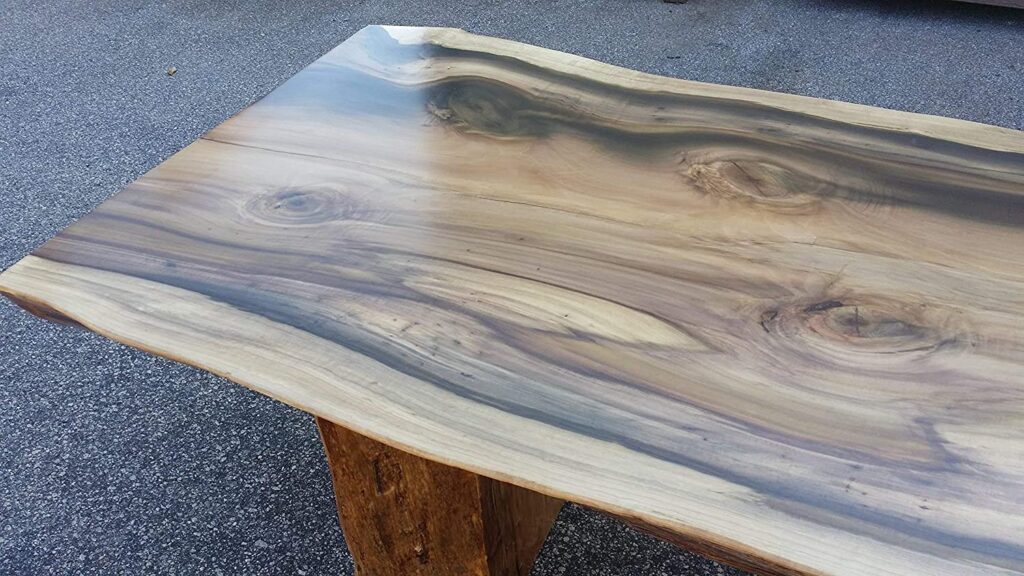There are so many different varieties of wood to choose from that it’s simple to become confused. Poplar wood is usually white or creamy yellow in appearance, although it can sometimes be brownish or have mineral streaks of various colors, which is known as “rainbow poplar.” It is more commonly used for practical purposes, for example, it is used in drawers rather than cabinet fronts or match sticks rather than tables. It does occasionally also occur in artisan furniture.
What Is Poplar Wood?

Poplar wood is a type of wood that is commonly used to make furniture, cabinets, decorations, wooden toys, plywood, and other items. It’s classified as a hardwood, yet it’s just as simple to deal with as pine or other softwoods. It also has a variety of different purposes, but these are the most common ones today.
The heartwood of poplar boards is white/ivory in color, with green or brown streaks running through it. Furthermore, the wood has a straight grain and a consistent feel. It has a medium-density, which makes it ideal for painting and gluing. Poplar is one of the most popular utility hardwoods due to these properties. As a result, poplar is a popular choice when it comes to interior design. Poplar wood is a cost-effective choice for woodworkers.
What Is Poplar Wood Used For?

Poplar is one of the most common hardwoods found in North American woodlands. It grows abundantly in the eastern United States and is consistently one among the top ten hardwood lumber products in terms of volume produced.
Poplar wood is used in a variety of applications since it is often readily accessible. Here are five common uses for which we poplar is used in.
Trim & Moldings: Ceiling molding and trim is frequently made of poplar. It is well-known for being sturdy and for taking paint and stain beautifully. Because its logs can be collected in longer increments, it is frequently found in larger lengths (12′, 14′, and 16′). This makes it suitable for this sort of application.
Furniture: Poplar wood has traditionally been a popular choice for upholstered furniture. Because of its color variance, it is not commonly used in fine furniture, but it is also excellent for framing and support.
Cabinets: With today’s design trends favoring painted cabinetry, there’s an increase in the usage of poplar in cabinets. Poplar is a durable tree that may be machined into a variety of cabinet forms and sizes. You will also find poplar wood stained in different colors that are used in cabinets.
Picture Frame: Poplar has become increasingly popular in the manufacture of picture frames throughout the years, and it is still widely used.
Pallets, boxes, and crates: Poplar is an excellent choice for industrial applications because of its low cost. Poplar is used in a variety of utility applications, including the ones named above.
Tulip Poplar Wood
Tulip poplar gets its name from its deeply lobed, bright-green leaves that resemble tulips. Straight, dark gray trunks up to 3 feet broad characterize the trees. Tulip poplars also have tulip-shaped yellow-and-orange cup-shaped blooms in the summer, which are followed by cones that release “winged” seeds. Tulip poplars, which grow in USDA plant hardiness zones 4 through 9, offer a variety of applications in and out of the garden.

Uses of Tulip Poplar Wood
Tulip poplar tree lumbar may be used for a range of wood-based products, including flooring, siding, furniture, and fence. Tulip poplar wood is often light off-white to yellow-brown in color, and it darkens with age when exposed to the elements. The straight grain of tulip poplar wood aids in the absorption and retention of paint and stain.
Because of its capability to take a clean, smooth, precisely-cut finish and efficiently seal against pipes and valves, tulip poplar wood is the choice for use in organs.
Other uses of tulip poplar wood include home interior finishes, siding, carriage panels, coffin boxes, pattern timber, and woodenware.
Tulip poplar wood attracts a wide range of species. Deer, mice, and rabbits graze on young trees. Squirrels and birds use them for refuge and to raise their young. Hummingbirds, butterflies, and bees may be seen fluttering from bloom to bloom when the tulip poplar wood tree is blossoming, dispersing the pollen needed to form seeds.
Staining Poplar Wood

Poplar wood does not stain well. It just does not hold the stain well because of its color, texture, and porosity. The dye will sink into it unevenly; resulting in a drab, blotchy finish. However, you will find poplar wood stained in different colors. The most important thing is to do each staining step properly and attentively.
Poplar wood stained in walrus oil gives a light, natural wood finish. Without adding any color or chemicals, this oil brings out the inherent beauty of the wood.
On poplar, dark stains seem splotchy. However, poplar wood stained in minwax true black paint completely changes the look of the wood. This is a fantastic choice for a manly or contemporary look.
Tips to achieve poplar wood stained to perfection
As earlier stated, poplar wood is prone to staining in a blotchy manner.
The easiest technique to eliminate blotchiness is to sand the wood down to 220 grit before coloring it.
Then use a wood conditioner or pre-stain to level out the wood and ensure that the stain absorbs evenly. The end result will be poplar wood stained in the stain color of your choice. Finally, when using poplar wood, try to use lighter stain colors to avoid dark splotches.







